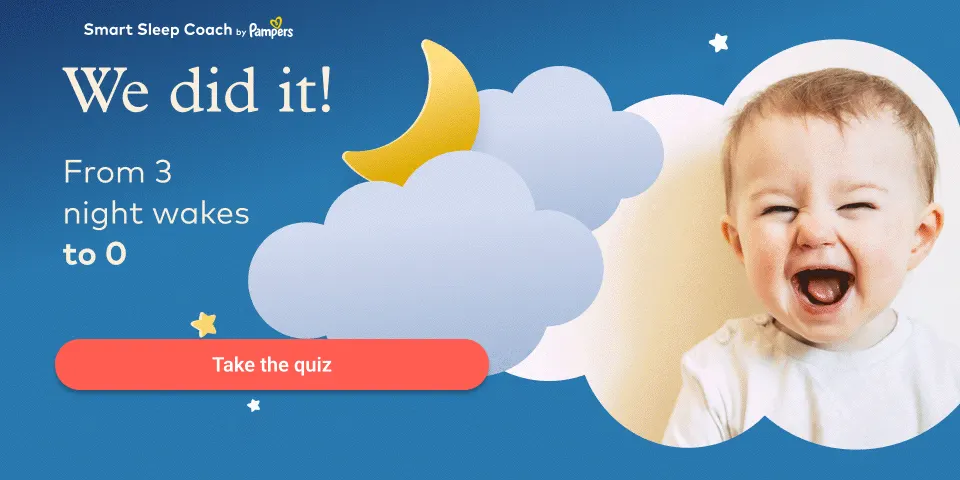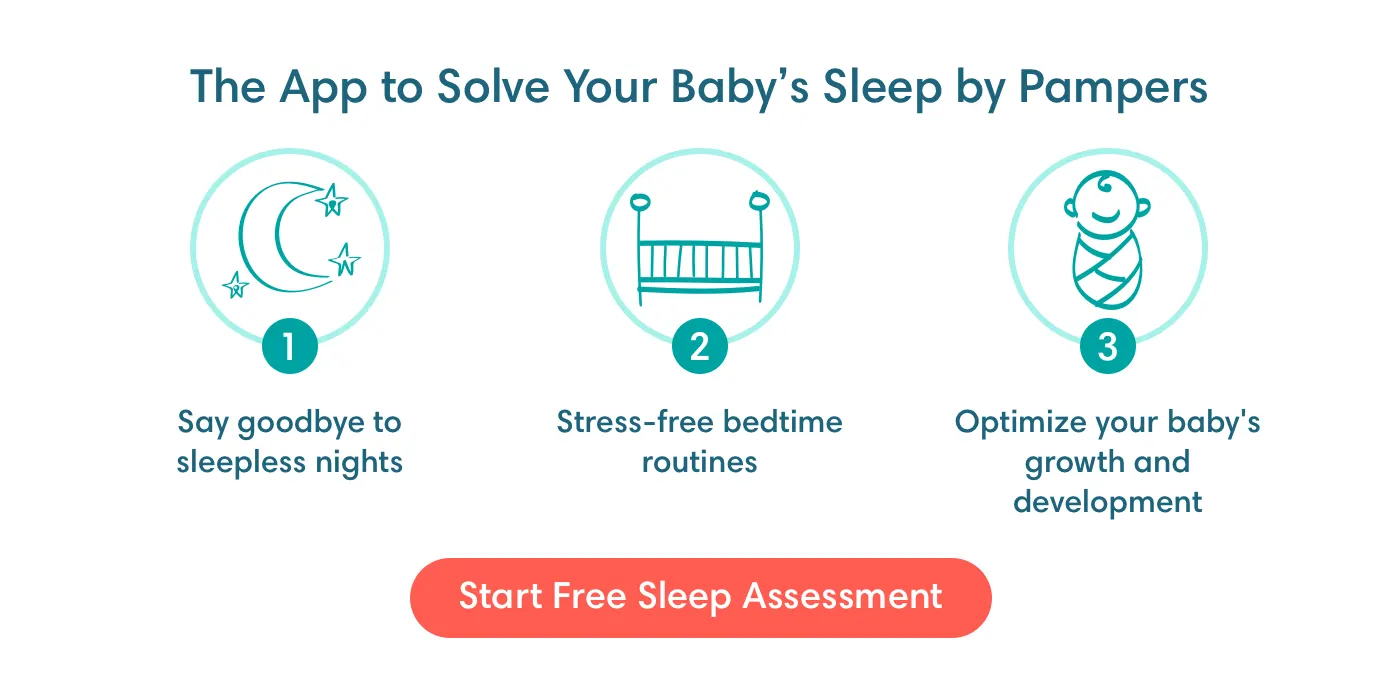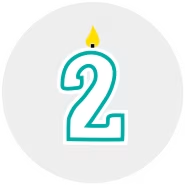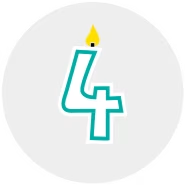3-Month-Old Baby: Getting into a Groove
Life with a 3-month-old baby is all about settling into this parenting thing by establishing routines and getting to know your little one. There's still some uncharted territory, but you may be feeling more confident in your abilities as a parent and excited about what's to come with each day. Here, we'll highlight some of the developmental milestones to look forward to, answer some common questions about life at this stage, and reassure you that, although you may be short on sleep, you're doing great!

Baby Development Milestones
There's a lot happening this month as your baby grows and becomes more aware of her physical self and the world around her. Here's a look at some of the developments you might be observing.
Growth and Physical Development: Stronger by the Day
Thanks to developing bones and muscles, your baby is now able to stretch herself out, showing you just how long she is. On average, she's probably growing about 1 to 1½ inches per month, and gaining about 1½ to 2 pounds, although every baby is different. Your 3-month-old baby is slowly gaining more control over her body and her movements. As a newborn, many of her movements were involuntary reflexes, but now she may be starting to be more intentional as she moves her head, hands, and feet, for example. With her neck strength increasing, soon she'll be able to hold her head up independently and look at people and things in her field of vision. At the same time, you may notice your baby begin to reach for objects nearby or follow moving objects with her eyes as her vision improves.
Senses: Building Blocks of Communication
There's a lot to discover, and your 3-month-old baby is learning to take it all in, bit by bit. Her vision is improving, and she's more sensitive to circular shapes and patterns now, including spirals and curls. Faces, especially yours, are among her favorite sights.
When it comes to hearing and speech, your baby has already learned to associate your voice with comfort, soothing, and love. Now, she's likely becoming more aware of your tone and emphasis on certain words, and she'll try to mimic those sounds. At 3 months old, she's learning that conversations are a two-way process and picking up other concepts of communication. Watch as she takes in your delighted reaction to her babbles and her own delight in your singing or reading to her, for example.
Movement: A Full-Body Workout
At around this time, most babies’ movements become more deliberate, and you'll probably start to see some exciting developments in your little one's motor skills. Stretching her body out helps to strengthen her leg muscles, and this is just the preparation she needs to be able to roll over. Rolling over probably won't happen for another two or three months, but she's getting ready!
Have you tried placing your baby on her feet while supporting her under her arms? You may notice she's able to flex and straighten her legs on her own, which is great preparation for standing. Try letting her bounce herself in this position and see how proud she is of this new ability.
You can help encourage her movement by providing daily tummy time sessions, handing toys to her, and letting her grasp at objects hanging from an infant gym or playpen. These activities can help your 3-month-old baby with motor development, hand-eye coordination, and other important skills.
And, it's not only your baby's legs that get a workout this month. Your 3-month-old baby can now open and shut her hands to grasp things, like toys or your fingers. By now, she's likely gained slightly better control of her arms, so she can attempt to reach for objects and may try to bat at something that catches her eye. She's probably also gotten more successful at bringing her hands to her mouth, so it's time to be extra careful about what she may be able to get her hands on.
Personality: Your Baby's First “Conversations”
Watching a baby's personality emerge is one of the many joys of parenthood. Have you noticed she's smiling more and responding to your voice? That's great! It's likely that she really enjoys play time with you and other people, and she's now able to express her enjoyment with her face and whole body. She may even start to imitate some of your movements and facial expressions. If this isn't happening yet, or if you're wondering what to expect from a 3-month-old baby, don't worry: all babies develop in their own way and on their own timeline.
Your little one may now be having “conversations” with you, though these mostly consist of back-and-forth exchanges of sounds, smiles, and gestures. These little “chats” you have with your baby are not just fun, but also help build her trust in you and boost her self-esteem. If you have other children in your household, you may notice your baby is increasingly interested in them. At this age, babies often have favorite people and become quite curious about other little ones.
Babies make their needs known in different ways, and as a parent, you'll get to know your own baby's subtle (and not-so-subtle) cues that she needs something. The ways she communicates with you are important parts of her personality and temperament. For example, you'll get to know her urgent needs by the way she cries or from her body language, and you'll learn to distinguish these cries and gestures from one another. Your baby’s cries of hunger will likely sound and look different than her cries of pain. Similarly, you'll get to know when she's simply fussing, and when a change of activity or favorite toy can calm her.

How to Support Your Baby's Development
Your pediatrician will share a variety of ways you can help foster your baby's development. Many of these suggested activities will encourage movement and help your baby master the skills she will need to roll, sit, and hold her head up, while others will promote cognitive and sensory development. Here are some strategies to keep in mind, along with some 3-month-old baby activities to try:
Strengthen back and neck muscles. With you close by, place your baby on her stomach on a play mat or blanket for short stretches of tummy time to gain more control over her legs, arms, and head.
Promote hand-eye coordination. Encourage your baby to grasp for small objects like toys or your fingers. She'll need this skill as she learns to bring her hands to her mouth successfully.
Aid visual development. Her distance vision, color vision, and tracking skills are all improving during this month. Help her along by introducing stimulating colors, patterns, and textures for her to enjoy in the form of toys, books, colorful mobiles, play mats, and other activities.

Feeding Your 3-Month-Old Baby
Three-month-old baby feedings may become less frequent than they were in the early newborn days. Whether their nourishment comes from breast milk alone, or from formula, or from some combination of the two, most babies this age are able to consume more milk at each feeding than they were able to in the previous two months (now five to six ounces on average), so their feedings are less frequent (perhaps six to eight feedings in a 24-hour period).
Tracking wet and dirty diapers: Tracking diapers is a good way to gauge if your baby is getting enough to eat. Her stools may be more solid now, and occur less often. As a newborn, your baby may have passed a bowel movement after every feeding, but your 3-month-old baby may only pass one once per day, or even once every two or three days. In general, you'll know she's feeding well when she produces around six wet diapers per day.
As you’ve no doubt noticed, your baby’s using lots of diapers. Join Pampers Rewards, if you haven't already, to earn points toward gifts and discounts on diapers, baby-care products, and more.

How Much Sleep Does a 3-Month-Old Baby Need?
At this point, your baby's sleep habits may be going through some changes. All that growing she's been doing means that she's able to eat more during the day, and so possibly requires fewer or no night feedings. She's now more alert during the day, which in turn makes her sleepier at night. And now, she may take two or three naps during the day, followed by a longer stretch at night. Some babies may be sleeping through the night, but it's important to remember that this doesn't apply to all babies and that “through the night” often means a stretch of about five or six hours.
How to Put Your Baby to Sleep
When putting your baby to bed at night, or for a daytime nap, follow these guidelines for safe, restful sleep and for reducing the risk of SIDS:
Always on her back
Never in bed with you
On a firm crib mattress with no loose bedding
Dressed comfortably for room temperature
With a pacifier.
Tips for a Good Night's Sleep
It's a good idea to aim for a consistent baby sleep schedule that suits you both. Try the following tips for a more restful night:
Establish a routine. Giving her a gentle massage, reading a story, or singing a lullaby are great ways to help your 3-month-old wind down after the day's activities. Our video guide shows you more about how to create a comforting nighttime routine.
Let her squirm. Your baby may need a minute to settle down and get comfortable. It's OK to let her wriggle, babble, or even cry just a bit before she nods off.
Minimize stimulation. If you need to attend to your baby during the night, try to minimize distractions. Keep the lights low and don't talk very much during nighttime feedings or other visits to keep her calm and make it easier for her to drift back to sleep.

Your Baby's Health: Infant Massage
You may be wondering if there is anything you can do to promote health and wellness beyond your baby’s regular playtime activities. Some babies enjoy the relaxation and bonding that comes from an infant massage. By applying the right techniques, you can strengthen your bond with your baby while reducing his stress levels, and possibly decrease the amount of crying.
It's a good idea to check with your pediatrician first, and you may even be able to find local classes in infant massages to show you the ropes, but here are some basic techniques to try:
Create a relaxing environment. You can use your baby's changing table or your own bed. With your baby on his back, maintain eye contact as you begin to massage him.
Use a gentle touch. Use gentle strokes to massage each part of his body from his head, neck, and shoulders to his waist, thighs, feet, and hands.
Talk or sing to him. He'll feel more relaxed if you talk softly or sing a favorite song while massaging him.
Gauge his reaction. Continue the massage if your baby seems happy. If he seems restless or fussy, tine to stop, as he's probably not enjoying it.
You'll want to wait at least 45 minutes after feeding before beginning a massage. If your little one ends up enjoying this activity, it can continue well into the toddler years, too.

FAQS AT A GLANCE
The soft spots should be closed by the time he is 2 or 3 months old. His head may still look proportionately large compared to his body.

Your Life as a Parent: Dealing With Sleep Deprivation
Missing those pre-baby mornings when you could sleep as long as you wanted? Any new parent can tell you sleep deprivation is a very real concern. Of course you want to be at your best for your baby, but lack of sleep doesn't make it easy. The key to making things just a little bit easier is teamwork — between you and your partner and/or other caregivers, like a grandparent or nanny — and prioritizing which tasks are truly important, and which can be put aside for now.
One way to minimize your sleep deprivation is by sharing your baby's bedtime routine. Essentially, sharing this routine means the responsibility for putting the baby to bed doesn't fall solely on you, giving you a well-deserved reprieve from time to time. This arrangement is also healthy for your baby, as he learns to fall asleep under slightly different circumstances each night, and he doesn't become dependent on your interaction with him to fall asleep.
Other ways to prevent sleep deprivation include:
Splitting the task of nighttime bottle feeding with your partner or other caregiver.
Eating nutritious foods and staying hydrated.
Sleeping when your baby sleeps.
Getting some light exercise, even if it’s just going for a walk with your baby or running a short errand by yourself.
Checklist for This Month
Ask your pediatrician about any upcoming immunizations your baby needs. Learn more about his immunization schedule.
Get a sneak peek of what might be coming next month by reading our 4-month-old baby article.
How we wrote this article
The information in this article is based on the expert advice found in trusted medical and government sources, such as the American Academy of Pediatrics and the American College of Obstetricians and Gynecologists.
The content on this page should not replace professional medical advice. Always consult medical professionals for full diagnosis and treatment.
3 month old baby - checklist






